If you subscribe to BusinessDen, you’ll no doubt have read their two-part story, “Island Tripping,” on the constraints around the G & B Lines’ first stop outside of Downtown Denver. I recommend the story, but to summarize, the way the highways and freight rail cut this part of town off from the street grid concerns the city, vis-a-vis emergency services. There are currently two ways to drive into and out of the neighborhood: 44th Avenue across I-25; and the Fox Street, 38th Avenue, and Park Avenue intersection at the southern end of the “island.” Were a dense neighborhood to be built without new connective infrastructure, firefighters, police, and other first-responders worry they could not enter the neighborhood in their emergency vehicles to keep people and property safe. Emergency services could not abide that.
Thus, a very strict and bespoke transportation management scheme limits the amount of “trips” this section of the neighborhood can accommodate. This is not the same as claiming that there is a cap on vehicle parking spots or vehicles in the neighborhood. “Trips” also do not include trips on foot, by transit, or on a bike. Trips are determined by the number of residences, commercial activity, and worksites that people will use cars to access. The very construction underway in the neighborhood is itself a driver of trips that must be accounted for! If the number of projects proposed yet seemingly in limbo surprises you, then, we must consider that each project—before, during, and after the project—is implicated in this trip management system. So much of this neighborhood relies on phases which will increase the trip capacity of the neighborhood: a new bridge here, a new intersection, an underpass there. Consider that the City has no plans to build any new roads in or out of the neighborhood. It’s up to the private market, equipped with public tools like TIF and metro district financing, to deliver the infrastructure that makes the homes safe to build.
The massive development that will be Fox Park is underwriting a good portion of these infrastructure improvements, but it’s a complicated, phased affair. So we’ll leave Fox Park aside for this post. Though there are reasonable criticisms of this trip management scheme in Fox Island, as a result, many of the projects delivered, under construction, and proposed are radically lighter on vehicle parking than a similar project in RiNo might be.
COMPLETED PROJECTS
Fox Iron Works. The building is nearly finished, landscaping looks good, and the only hint that no one yet lives in the building are the workers still entering and exiting the building. I find the predictably bland naming convention of new multifamily buildings in formerly industrial areas to be in full-force here, but to this building’s credit, it did replace a literal metalworks shop. Also, their logo has a cute little fox in it, so props for taking both sources of inspiration in the branding. As mentioned in a previous roundup, this building make a big impression in the neighborhood!
| Project Description | Developer | Architect | Contractor |
|---|---|---|---|
| 5 Stories | 386 apt homes | 355 (v) 213 (b) parking | RangeWater Real Estate | Craine Architecture | MPC |
Alloy Sunnyside. The exterior of the building has been complete for some time, featuring novel vertical lights reminiscent of neon advertisements that line the grey brick-faced southern portion of the building. The interior is presumably receiving finishing touches, as the building has not yet been issued a Certificate of Occupancy. Nevertheless, the presence of this building along Jason really bolsters the sense that TOD has arrived with a force in Sunnyside. Additionally, Jason Street illustrates the varying uses present in the neighborhood, with small retail, office spaces, light industrial facilities, and now multifamily cropping up. This is not the last good project to grace these blocks of Jason Street, that’s for certain.
| Project Description | Developer | Architect | Contractor |
|---|---|---|---|
| 8 Stories | 209 apt homes | 2,650 sf retail | 186 (v) 108 (b) parking | Prime West | RATIO | Catamount Constructors |
Iota Fox Station. In contrast to the low-slung, rectilinear developments around it, the completed Iota Fox Station expresses a tidy, modern community. There is a strangely modest quality to this building, in the shade of the Assembly Student Living community, soon to be blocked from view by the new 7-story apartments under construction at 4040 Fox Street, its entrance tucked at the corner of Elati Street and 41st Avenue near a large pet boarding facility. Yet this building (currently) boasts the lowest parking ratio in Fox Island, and complements the existing neighborhood with dense infill development. Recently, the laws passed in the state legislature target a residential density of ~40 dwelling units per acre; this project actualizes 350 du/acre at this innocuous corner of the neighborhood.
| Project Description | Developer | Architect | Contractor |
|---|---|---|---|
| 7 Stories | 148 apt homes | 83 (v) 132 (b) parking | Highland Development | KTGY | MPC |
UNDER CONSTRUCTION
4040 Fox Street. This project has made swift progress, and the concrete podium is about finished. Above that will soon sprout a further five stories of wood frames. This project so quickly covers up the new Iota Fox Station development, just opening behind it. In fact, the best spot in the city to monitor this construction site is realistically on the small amenity deck on Iota’s seventh floor. But more residential development within 600 feet of the train station is about as good as it gets.
| Project Description | Developer | Architect | Contractor |
|---|---|---|---|
| 7 Stories | 224 apt homes | 119 (v) 218 (b) parking | Central Street Capital | Architectural Workshop | CFC Construction |
PROPOSED
805 W 38th Ave. Permitting progress continues for this neighborhood’s destination tower. Recent permits outlining an agreement between the developer and the city reveal that 12% of the proposed homes, 51 in all, will be reserved for those making an average of 70% of the area median income. This project should also bring new infrastructure to Fox Island, with the potential to increase the trip capacity for the rest of the neighborhood by allowing right-in, right-out turn movements at a newly extended Galapago Street as it intersects with West 38th Avenue. This project would also re-introduce a Huron Street alignment and push vehicle access for this building back there and away from Galapago Street. For an updated rendering of the project, click on the project description below.
| Project Description | Developer | Architect | Most Recent Activity |
|---|---|---|---|
| 20 Stories | 425 apt homes | 2600 sf retail | 338 (v) 264 (b) parking | Continental Realty |
Engine 8 |
Development Agreement (2024-05-30) |
Abacus Upper Fox (previously 735 W 39th Ave). This address and project name actually contains three separate residential buildings, all going through permitting as one project that requires horizontal development before vertical development can begin. There will be one 7-story building, two 5-story buildings, and an 8-story parking structure in the middle of one of the 5-story buildings. The pedestrian bridges we reported as proposed previously are gone from these new submittals. Clearly, an active street and public realm is a better use of public and private money than stringing a bridge across a 60-foot ROW.
| Project Description | Developer | Architect | Most Recent Activity |
|---|---|---|---|
| 5, 7, 8 Stories | 331 apt homes | 371 (v) 170 (b) parking | Abacus Capital Group | Meeks + Partners | Electrical Permit (2024-05-28) |
Link and Pin. This is such a unique project which takes its lead from Denver’s adoption of the Expanding Housing Affordability ordinance. In contrast to Iota Fox Station, which had to get special permission to reduce its parking burden, this project is required to provide no parking at all, and only 10% of the homes in this building will have access to a parking space. Additionally, a 12-story building at this corner is nothing to sneer at!
| Project Description | Developer | Architect | Most Recent Activity |
|---|---|---|---|
| 12 Stories | 270 apt homes | 26 (v) 174 (b) parking | Rainer Development | Workshop8 | Formal SDP (2024-01-16) |
4155 Jason Street. A proposal comes back to life, transformed and heightened, literally. When we last left this project, the design was beautiful, but modest. Now, the design is simpler, more of a workhorse building, but with an additional 2 stories of housing due to the developers exceeding the required affordability under Denver’s Expanding Housing Affordability ordinance.
| Project Description | Developer | Architect | Most Recent Activity |
|---|---|---|---|
| 7 Stories | 2000 sq ft retail | 140 apt homes | 83 (v) 23 (b) parking | LiveForward Development | Meridian 105 | Storm and Sanitary Plan (2024-04-10) |
Bonus Coverage!
The Ayden. Though three floors is modest for this neighborhood, and somewhat minor for DenverInfill, I nevertheless kept admiring the Ayden as it was being proposed and constructed. I couldn’t help taking photos as I recently visited the neighborhood. The site was previously a paved, vacant lot sporadically used by industrial sites nearby; the Ayden is obviously a huge upgrade.
The unique design here emphasizes the individual apartment homes by seeming to turn them about a central axis, and allowing what would have been internal walls and corners to protrude out the building’s sides. The sides are then emphasized by the black shingle-style siding, different from the yellow vertical siding of those exposed “internal” walls. Whether this architectural flourish is done to maximize solar access, privacy, shade during midday, or to allow for some unique ventilation practice, I’m not sure. This development, then, brings an almost mysterious, auspicious presence to the neighborhood. The somewhat disappointing fact of this building’s design, though, is that these triangle-shaped voids into the building are not put to use as balconies or additional sites for plantings. There are no window walls, nor corner windows. At the moment, the overhangs above the sidewalk do not feature lighting, nor hanging plants. Nor is there even a modest amenity on the roof of the first floor along the alley, like you’d find in many other developments. But the novel apartment design is appreciated, and the promise of the building is sound: new homes will soon be filled with people who are excited to be there.
| Project Description | Developer | Architect | Most Recent Activity |
|---|---|---|---|
| 4159 Fox St, Denver, CO 80216 | Palisade Partners | OZ Architecture | HKS Engineering |
CONCLUSION
It’s pretty astounding to consider that, in 2022, the American Community Survey estimated that the whole census tract containing Fox Island (but mostly consisting of Globeville) had a population of 4,580 people, very few of them in the “Island” proper. In this post, we’ve described an additional gain of 1784 homes to the “Island” alone, and that’s without even talking about Fox Park, which requires a longer explanation. Sunnyside has its attractions and charms. But attention is still required to transform the isolated, previously industrial tract of Fox Island into a destination, not just a place construction happens to. A call to action for new residents, then: how do you want to see this neighborhood grow and attract more neighbors in the future? What new amenities, public spaces, or businesses would attract you or friends of yours to the neighborhood? Comment below!
About the author:
Andy Cushen is a car-free urbanist living and working in Denver; his reporting and analysis of the construction boom in Denver neighborhoods can be found under the handle @BuildupDenver on Twitter. As part of the DenverInfill team, Andy covers neighborhoods north and west of I-25 (such as the Highlands, Sun Valley, and West Colfax) and RTD rail stops with significant developments nearby.






























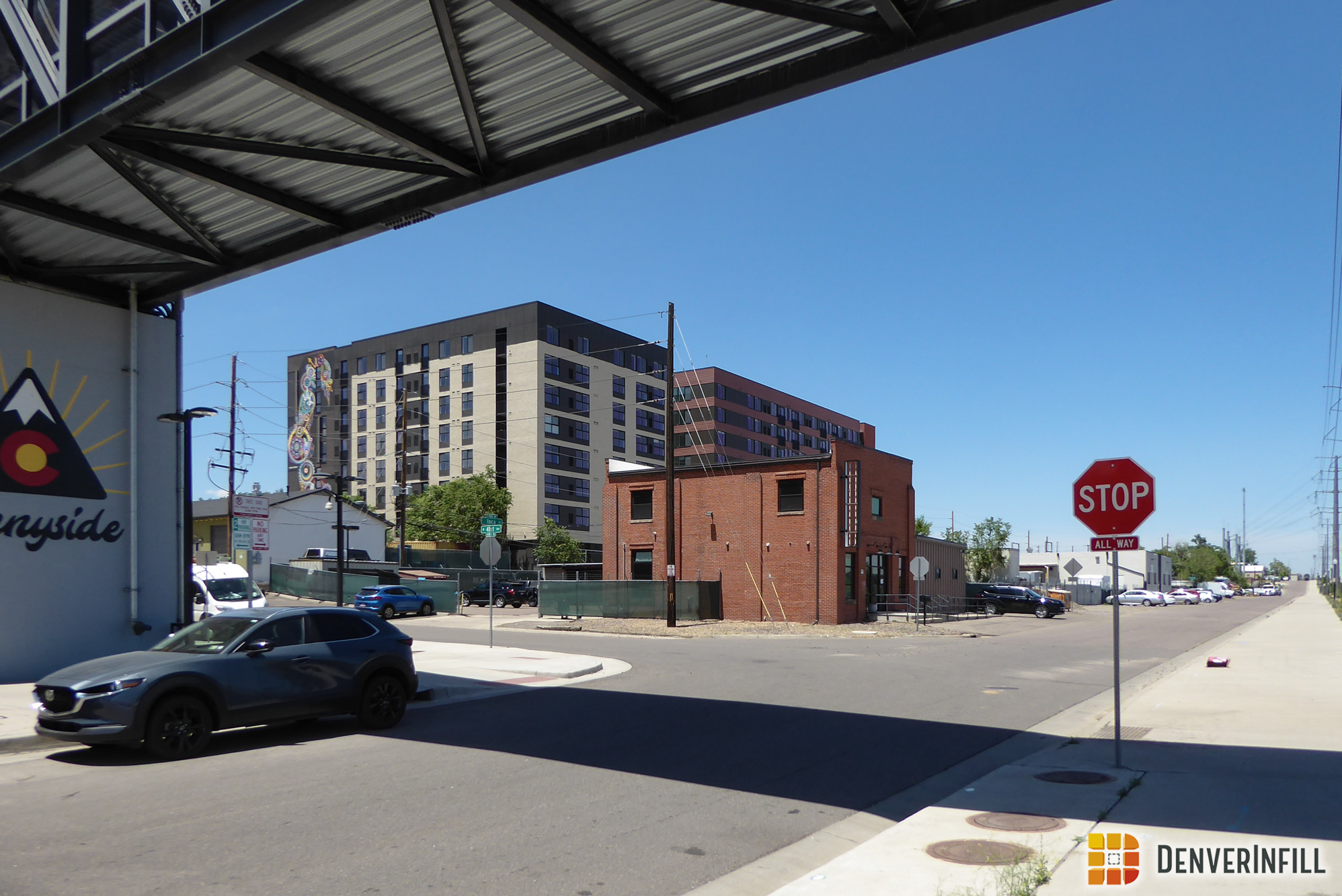





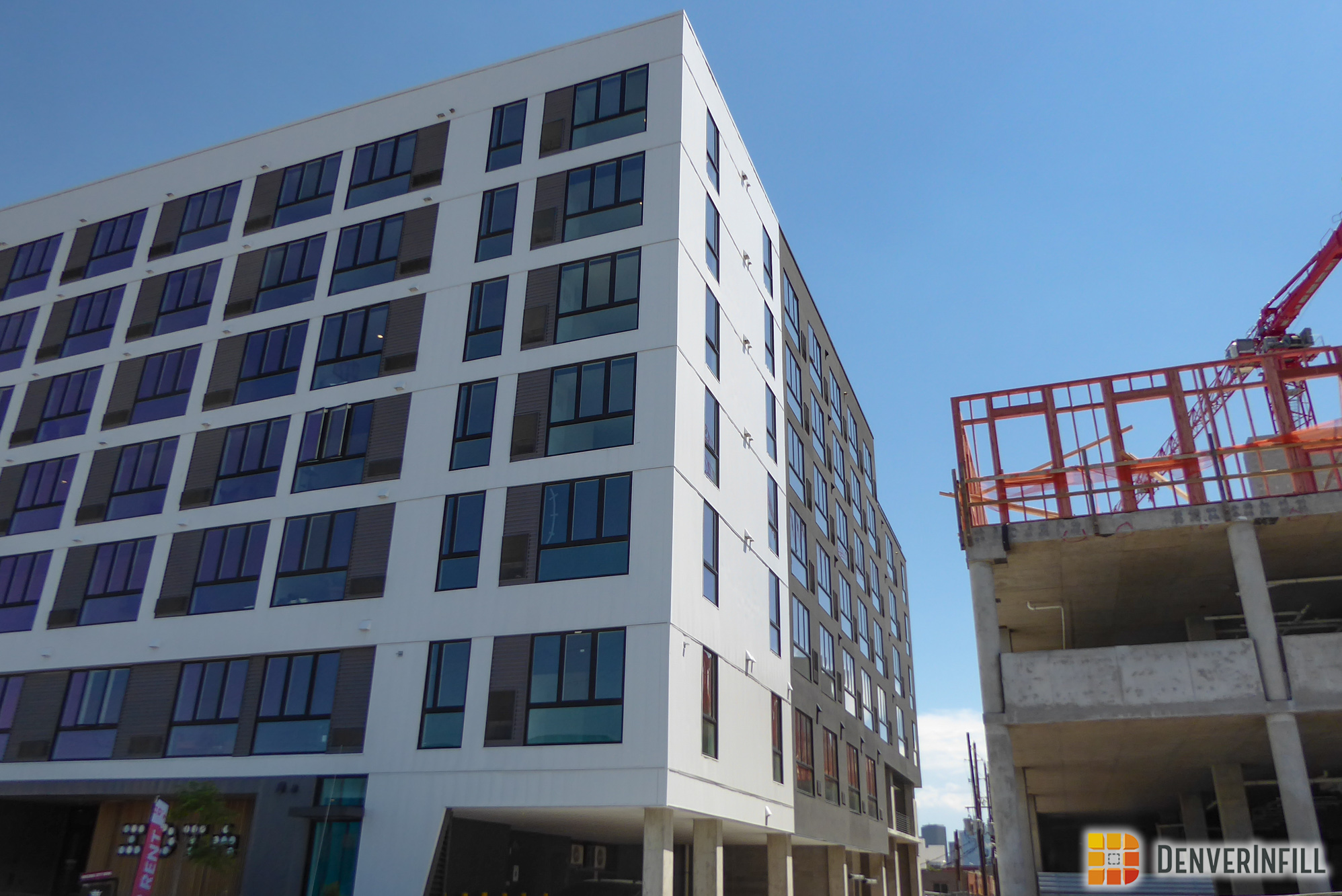

























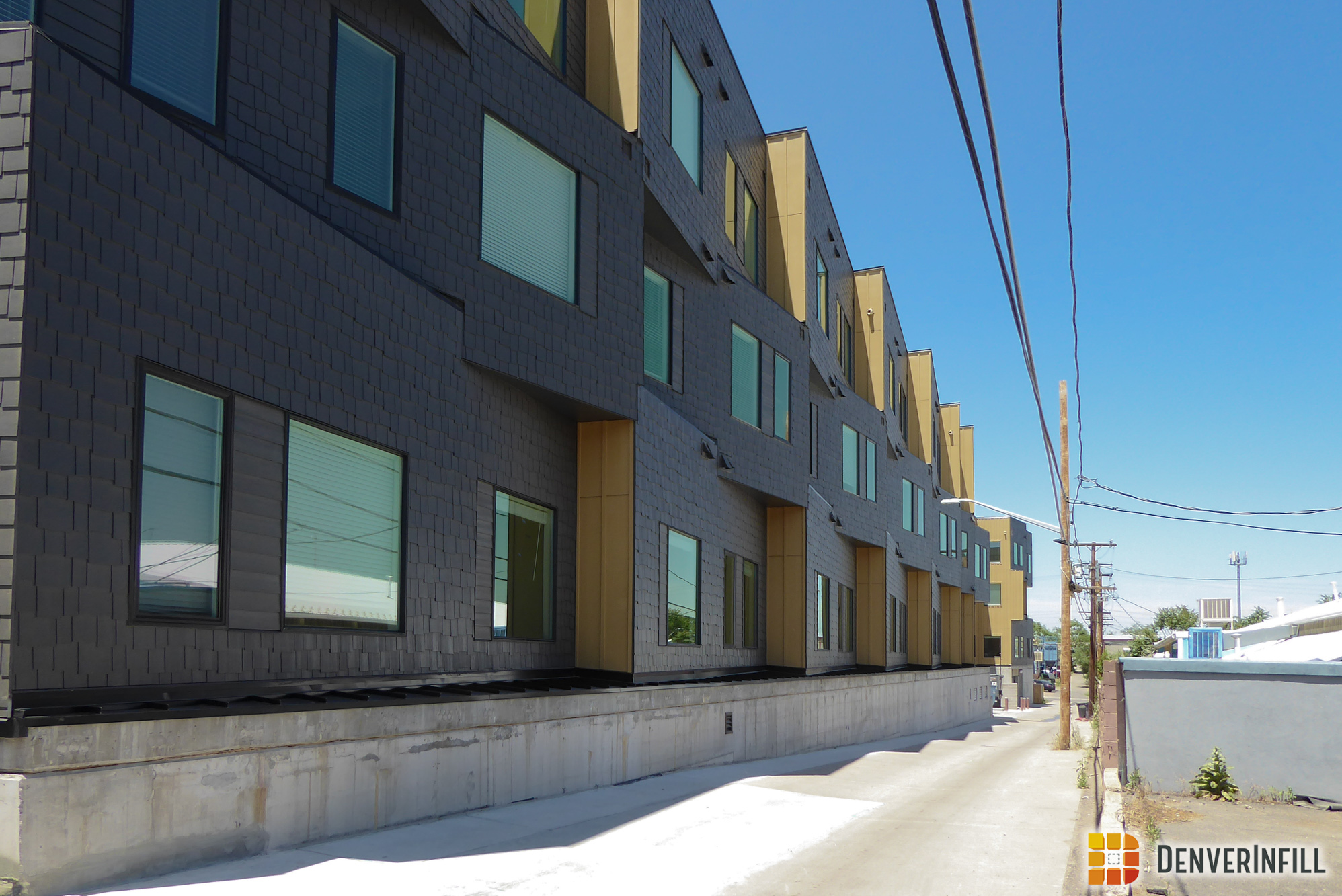








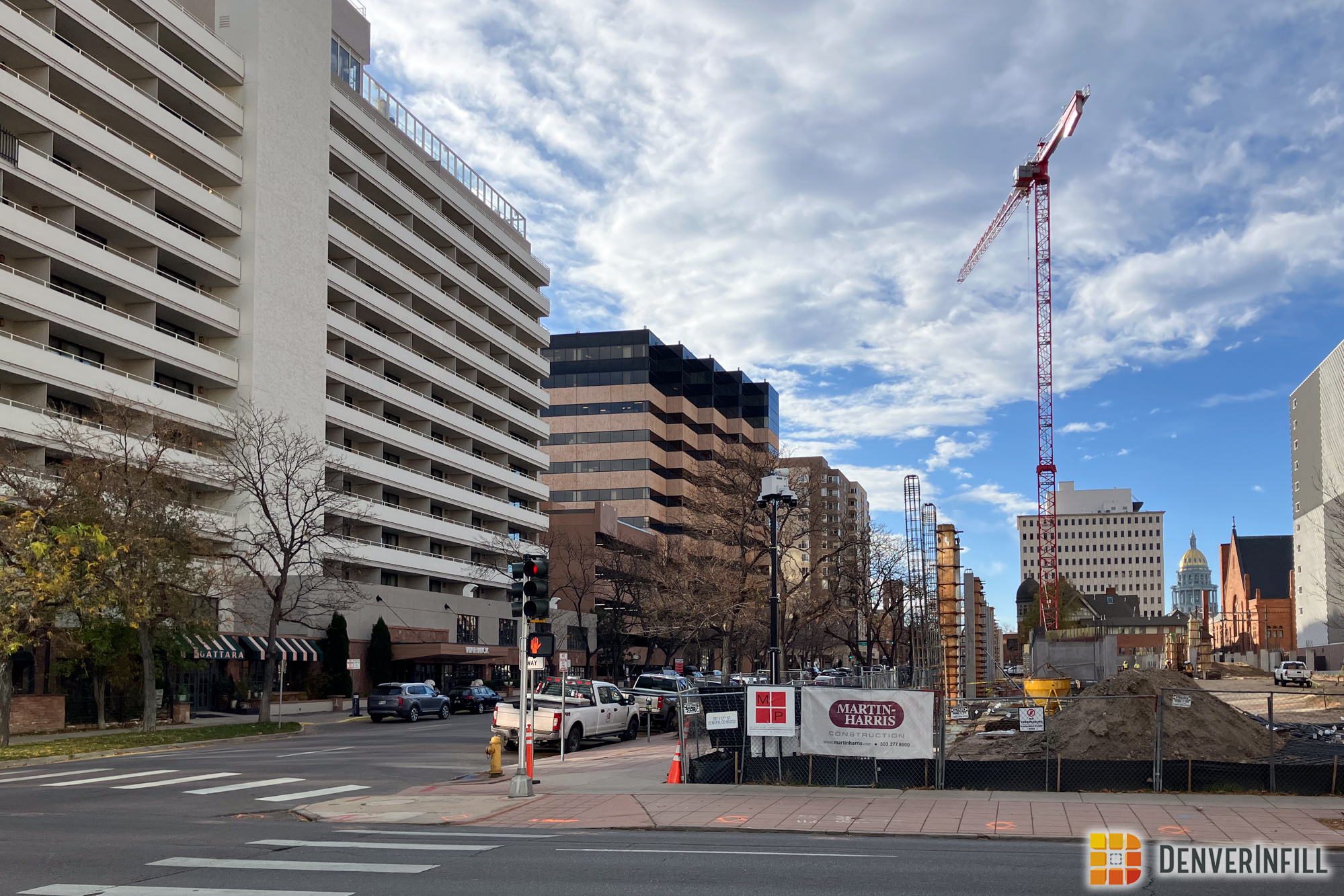
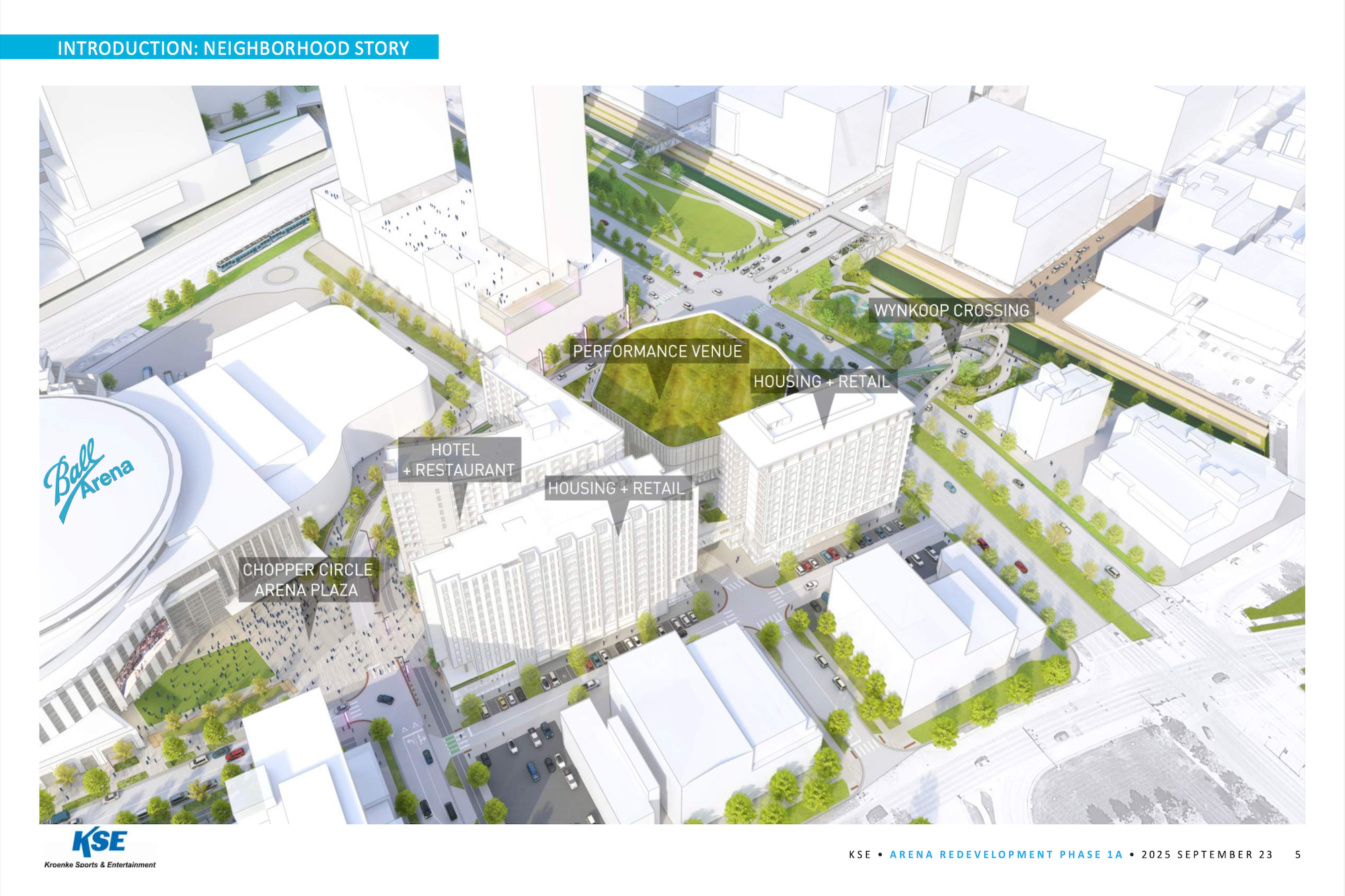
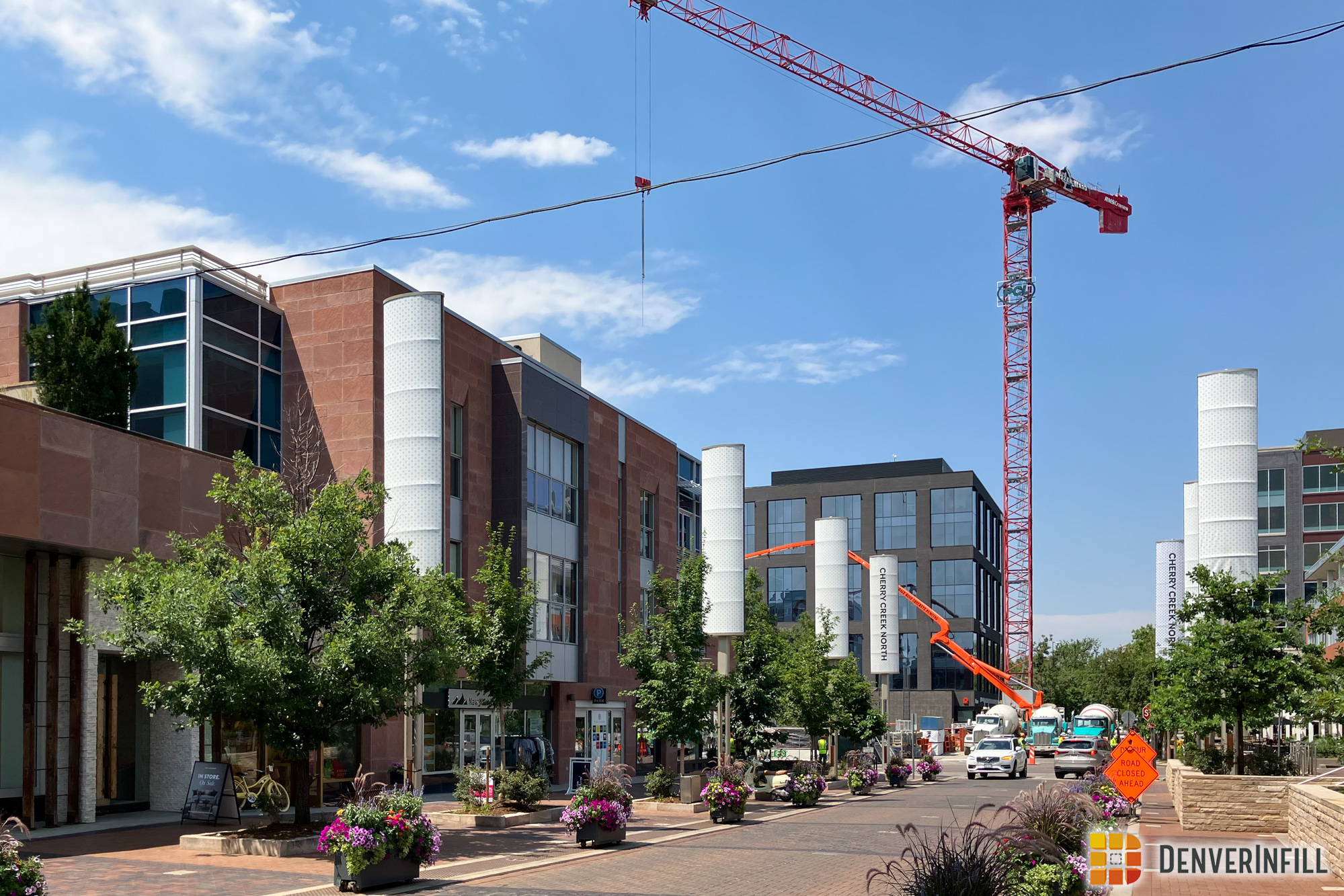
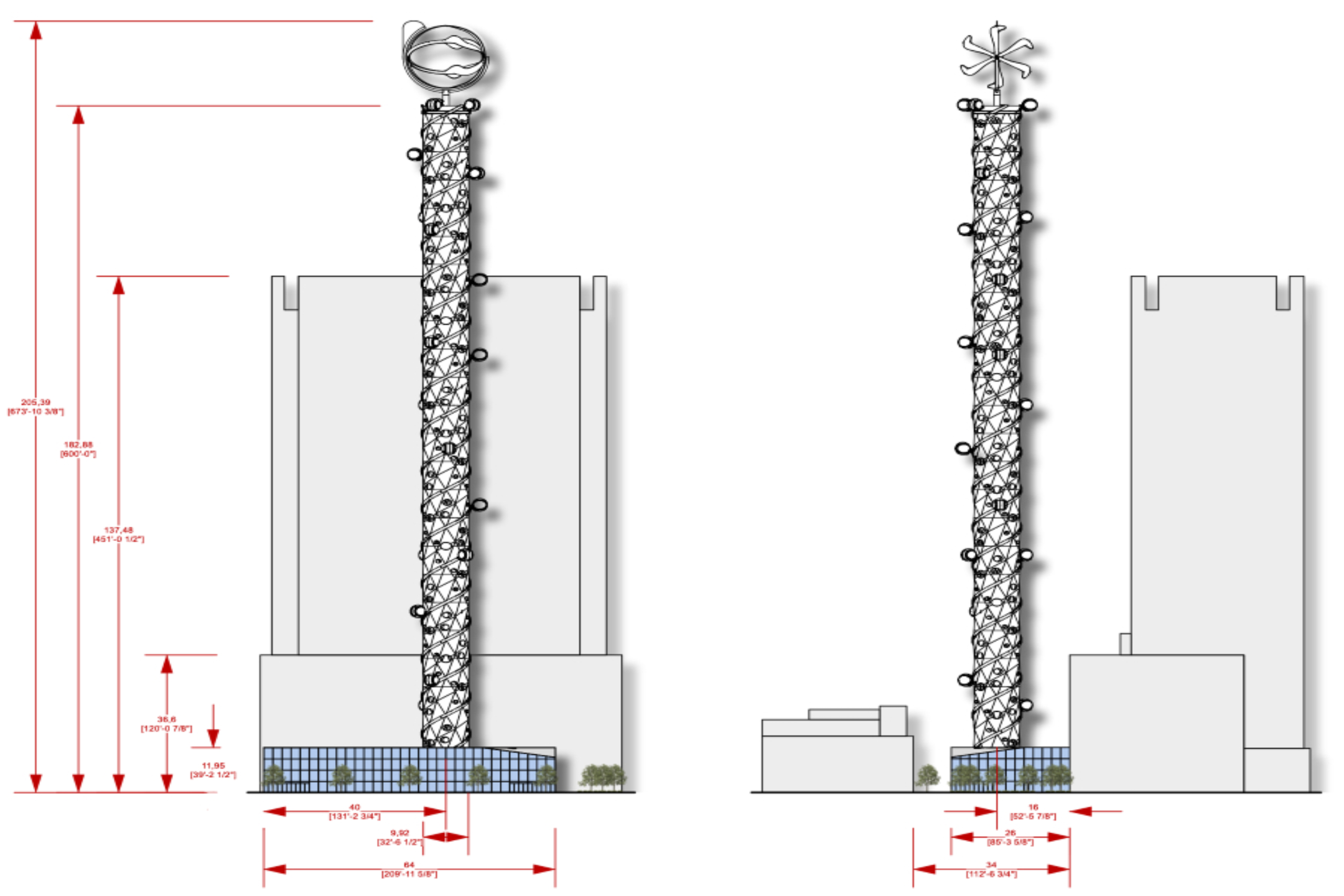



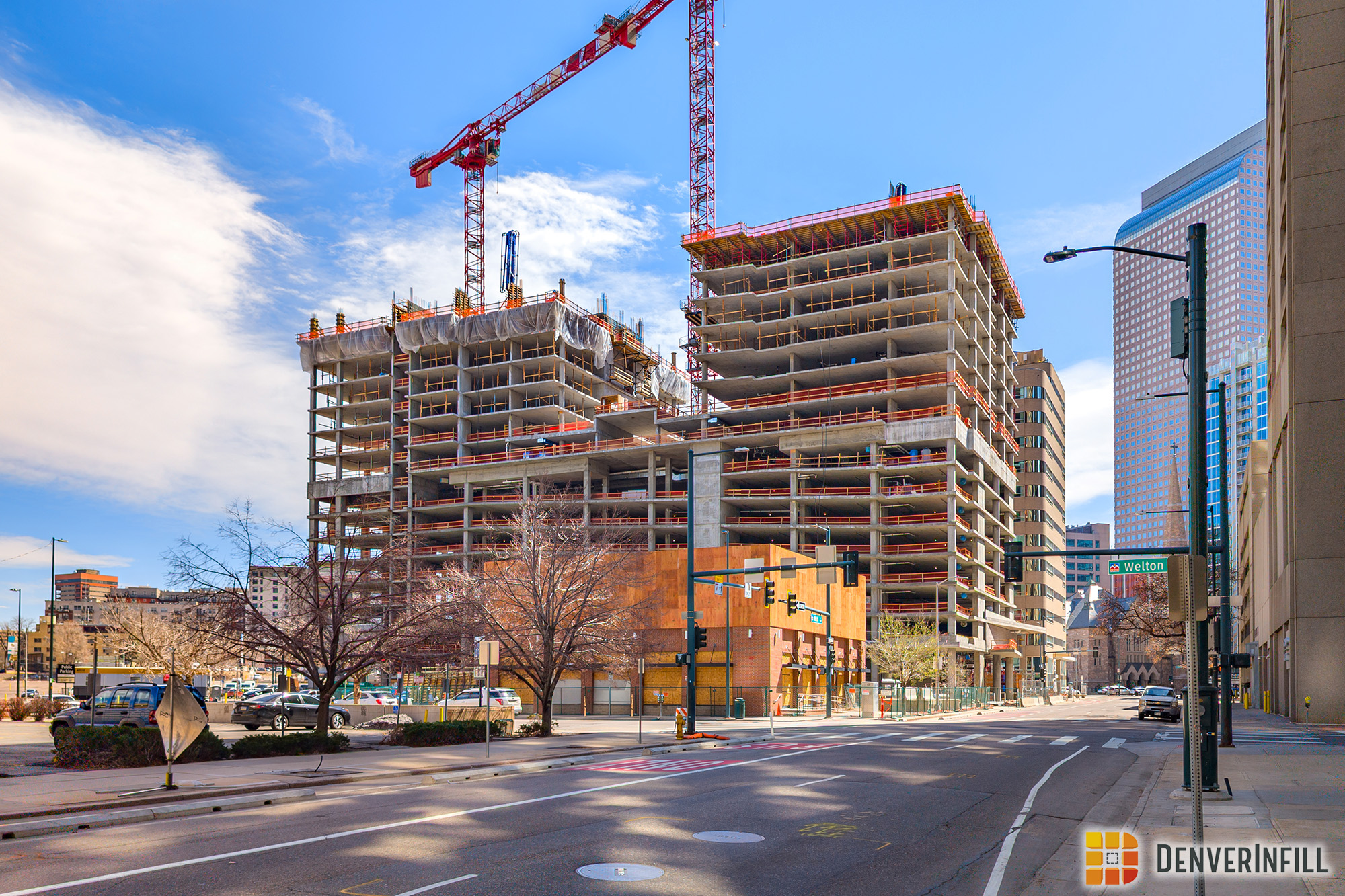

Excellent, insightful write-up! With the transit keystone firmly in place, the fact that island trip metrics don’t include the humble foot and bike makes improvements to infrastructure supporting those (often more efficient) modes doubly important. There’s currently very little access between Sunnyside/LoHi and Fox Island: the train station bridge is the best option, while the 38th Ave. underpass is a perilous hot mess. The proposed crossing at 47th Ave. will help, but only if the design prioritizes all traffic.
Would you predict the new infrastructure that Fox Park may finance to amount to something like one or two new bridges across the train tracks?
Great to see the density! Kinda sad that only ONE of the projects on the island contains retail space – how will it be a walkable self-contained neighborhood with only 2600 SF?
It won’t be. We’re living in a fantasy.
I think Fox Park, not included in this write-up, is planned to have ample retail and will likely be the “core” of this neighborhood.
Like Sun Valley development, the Fox & 41st neighborhood has been a surprise to see built up without significant retail. Denver Planning approvals have been devoid of requirements for critical walkable retail for some time, and undercut the walkable neighborhood objective in a major way.
How many groceries can you carry on a bicycle or take on the light rail? Are there even any grocery outlets adjacent to light rail stations? No restaurants? No pharmacies? No coffee shops where you can just hang out and enjoy the weather?
Let’s not get too excited about these neighborhoods that are becoming newly constructed ‘food deserts’.
Every island neighborhood needs a park or square in the middle. Someplace for the community, aside from the amenities offered in the individual buildings. The large building complexes are essentially gated communities.
Very interesting comments. We are in an era where it is difficult to pencil out affordable retail and restaurant spaces… creating new real estate is too expensive.
As they say, retail follows rooftops and, at least on the East side of the tracks, there are not enough rooftops…yet. According to the station area plan, the shopping areas were envisioned along Fox Street and in the area directly east of the train station. So the good news is that, with the exception of 4040 Fox and Fox Iron Works, much of that land is still undeveloped with no “known” plans. However, I do find it disappointing that the ‘Fox Iron Works’ development completely used up one of the few parcels zoned for 20 stories.
As a side note, ‘805 W 38th Ave’ is actually supposed to have 5600 sq ft of retail, according to the site development plan, and ‘Fox Park’ is planned for ~300,000 sq ft of retail space.